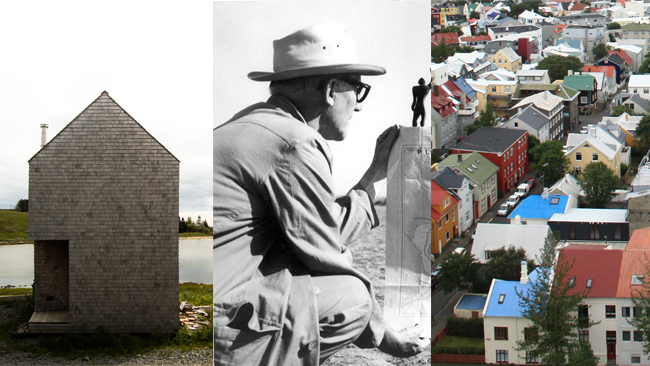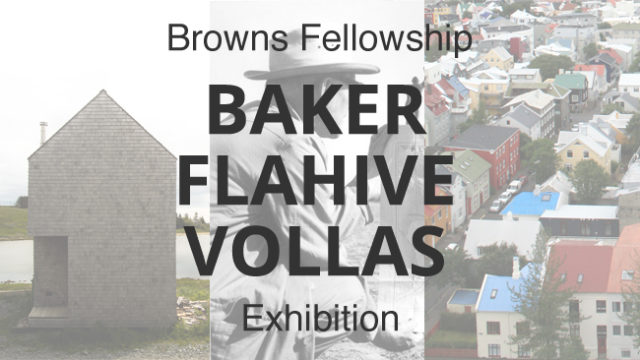Baker, Flahive, & Vollas [Brown’s Fellowship]
Talk: Mon Sept 24, Greene Gallery @6pm | Show: Sept 24-28, GR201

Kelsey Baker, Victoria Flahive, and Maria Vollas, students recipients of the Robert S. Brown Traveling Fellowship, will present a three-part exhibition on their recent travel experiences abroad. Their exhibitions will be on display from September 24th-28thth in Greene 201.
The September 24th presentation will begin at 6:00 pm in the Greene Gallery where each student will lecture about their experiences abroad followed by a reception at their shared exhibition space.
Kelsey Baker: Finding Beauty in Nature’s Simplicity
“Iceland as compared to other worldly forces is still in its infancy with the majority of Icelandic architecture less than half a century old, relieving architects of the heavy burden of tradition. Freed from the weight of tradition, architecture within Iceland is keenly poised and receptive to new and stimulating ideals in the design field. This proposal seeks to explore the artificial architectural world that has been seamlessly sewn in with the sweeping landscapes of this dynamic country. Iceland’s primeval connection to nature is so heavily ingrained into its culture and allows for a great opportunity of studying the natural world’s influence on architecture.”
Victoria Flahive: Exploring the Vernacular
“Exploring the Vernacular is grounded in the opposition to the increasing importance of imageability in architecture today. Calling for a return to grassroots in architecture, Victoria Flahive took to the northern atlantic provinces of Canada to study the work of architects Brian MacKay Lyons and Todd Saunders. Venturing to these maritime provinces allowed for experiential learning that brought forth an appreciation for integrity and economy in architecture, a rich history of making, and the value this provides to learning. Additionally, a critical standpoint on regionalism was found in Nova Scotia and Newfoundland, one that honors the land and treats architecture as another means to cultivate it. These qualities of the vernacular and its independence from modern day consumerism brought new life and perspective into an architectural education.”
Maria Vollas: Building A Modern Utopia in India
“Le Corbusier arrives in India in the 1950s, introducing the modern utopia in the field of the local Indian genius loci and the dreams of the population, who freed from the British Rule, aspires for a new independent Indian reality. The constellation of visions of the western modernity and the Indian reality are transformed into a moment of magic and become realized through Le Corbusier’s extensive work in Ahmedabad and Chandigarh. How has this utopian image responded to the Indian dreams of the 50s and 60s? How is it performing under the contemporary circumstances of the radical development of the Indian cityscape and landscape?”
//
